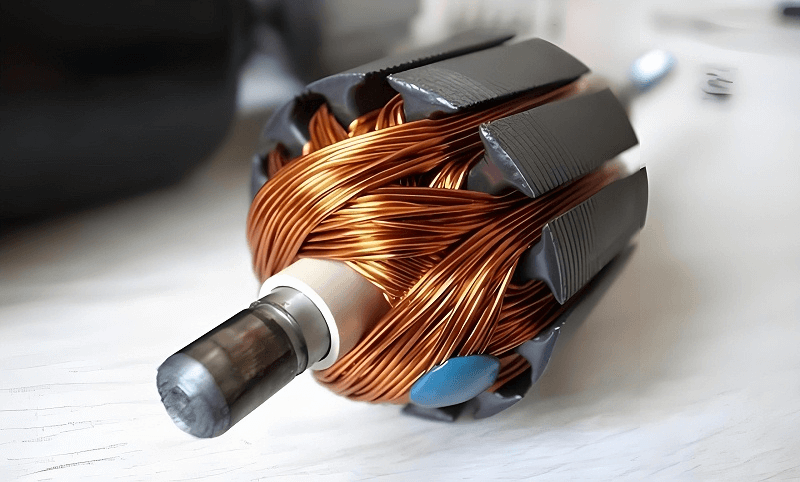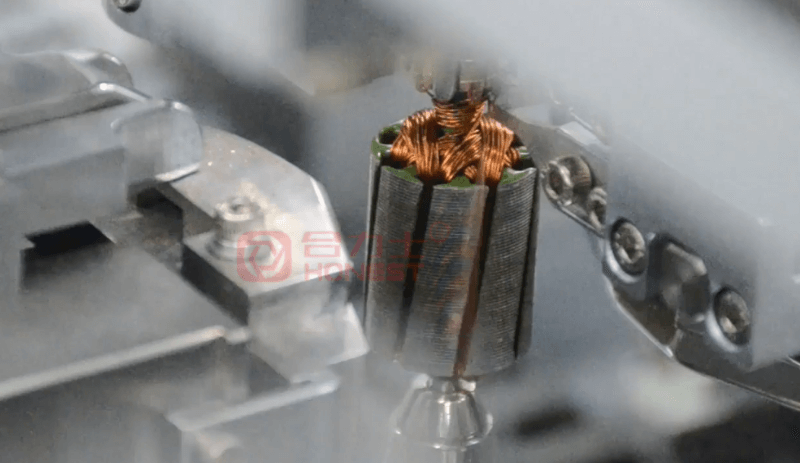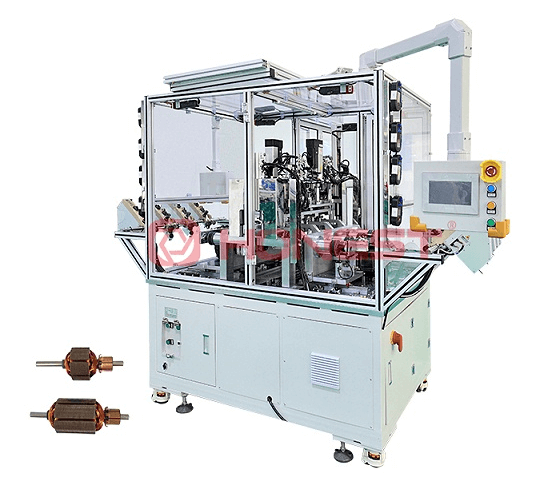
News Center
How to Ensure the Precise Arrangement of Coils in Rotor Winding Machine
Published on.
2025-02-05 09:53
Source
In the modern motor manufacturing industry, we often mention how stator winding machines ensure the precise winding of coils. However, as one of the key equipment in the production of motor rotor components, motor rotor winding machine undertake the important task of precise winding of coils. Through the deep integration of mechanical equipment and electronic control systems, rotor winding machine achieve real-time monitoring and precise control of every subtle link in the winding process, ensuring high-precision and high-quality winding of coils. The following are the key technologies and steps for rotor winding machine to achieve precise winding:
1. Application of High-Precision Sensors
The rotor winding machine is equipped with high-precision sensors, including displacement sensors, tension sensors and speed sensors, which play a vital role in the winding process.
Displacement sensor: During the winding process, problems such as uneven coil distribution and inconsistent turn-to-turn distance directly affect the electromagnetic performance and operating efficiency of the motor. The use of displacement sensors can monitor the position changes of the rotor during the winding process in real-time to ensure that the coil is wound according to the predetermined trajectory and accuracy.
Tension sensor: The wire often has uneven tension during the winding process, resulting in inconsistent coil tightness, which affects the arrangement and electromagnetic performance of the coil. In severe cases, it may even cause coil breakage or wire damage, reducing the overall performance and life of the motor. Therefore, the tension sensor can monitor the tension of the wire in real-time when winding the coil, and feed the data back to the control system to automatically adjust the tension to ensure that the wire maintains appropriate tension during winding.
Speed sensor: When winding a coil, speed fluctuations may also cause tension changes, further affecting the quality of the coil. The speed sensor monitors the winding speed in real-time to ensure that the speed is constant during the winding process, effectively preventing tension fluctuations caused by speed changes and improving the stability and consistency of the winding.

2. Automatic Tension Control System
Another highlight of the motor rotor winding machine. The system can adjust the wire tension in real-time, and detect and handle wire breakage or wire damage in time through detection sensors, further improving the quality and efficiency of winding. This function not only prevents the wire from being damaged due to improper tension but also ensures the continuity and stability of the winding process.
3. Precision Wire Mechanism
To ensure that the path and position of the wire can be arranged neatly, the motor rotor winding machine is equipped with a precision wire mechanism; such as flying forks, wire wheels and wire nozzles, which can accurately guide the wire to the correct path and position, ensuring that the wire can be wound smoothly and accurately in a complex process.
4. Programmed Control
By presetting the winding program and parameters, the motor rotor winding machine can autonomously perform complex winding tasks. Enterprises can preset parameters such as the number of turns, number of layers, wire diameter and winding shape according to actual needs to ensure that each coil meets the design requirements.
5. Temperature Control
During the winding process, the temperature of the winding may rise due to the friction of the wire and the winding speed. To prevent the insulation of the winding from being damaged or the performance from being degraded due to excessive temperature, the winding machine is equipped with a temperature monitoring system. It can monitor the temperature of the winding in real-time and take cooling measures when necessary to effectively prevent the insulation of the winding from being damaged due to excessive temperature.

6. Selection of Winding Method
The motor rotor winding machine supports a variety of winding methods, including single-layer winding method and multi-layer winding method. The single-layer winding method is to wind each wire in the rotor slot evenly, and each slot has the same number of turns. This method has a simple structure and is easy to manufacture, but the number of winding turns is small and the starting torque is small; while the multi-layer winding method is to stagger multiple wires in the rotor slot, and the number of turns can be the same or different. This method has more winding turns and greater starting torque, but the structure is complex and the manufacturing process is cumbersome. Manufacturing companies can choose the appropriate winding method according to actual needs to achieve the appropriate winding effect.
HONEST Automation's automatic rotor winding machine achieves precise winding of coils by deeply integrating the application of mechanical equipment such as high-precision sensors and precision wire mechanisms and also provides strong support for the production and manufacturing of motor rotors. With the continuous advancement and innovation of technology, motor rotor automatic winding equipment will continue to play a more important role in the field of motor manufacturing.

Related News






